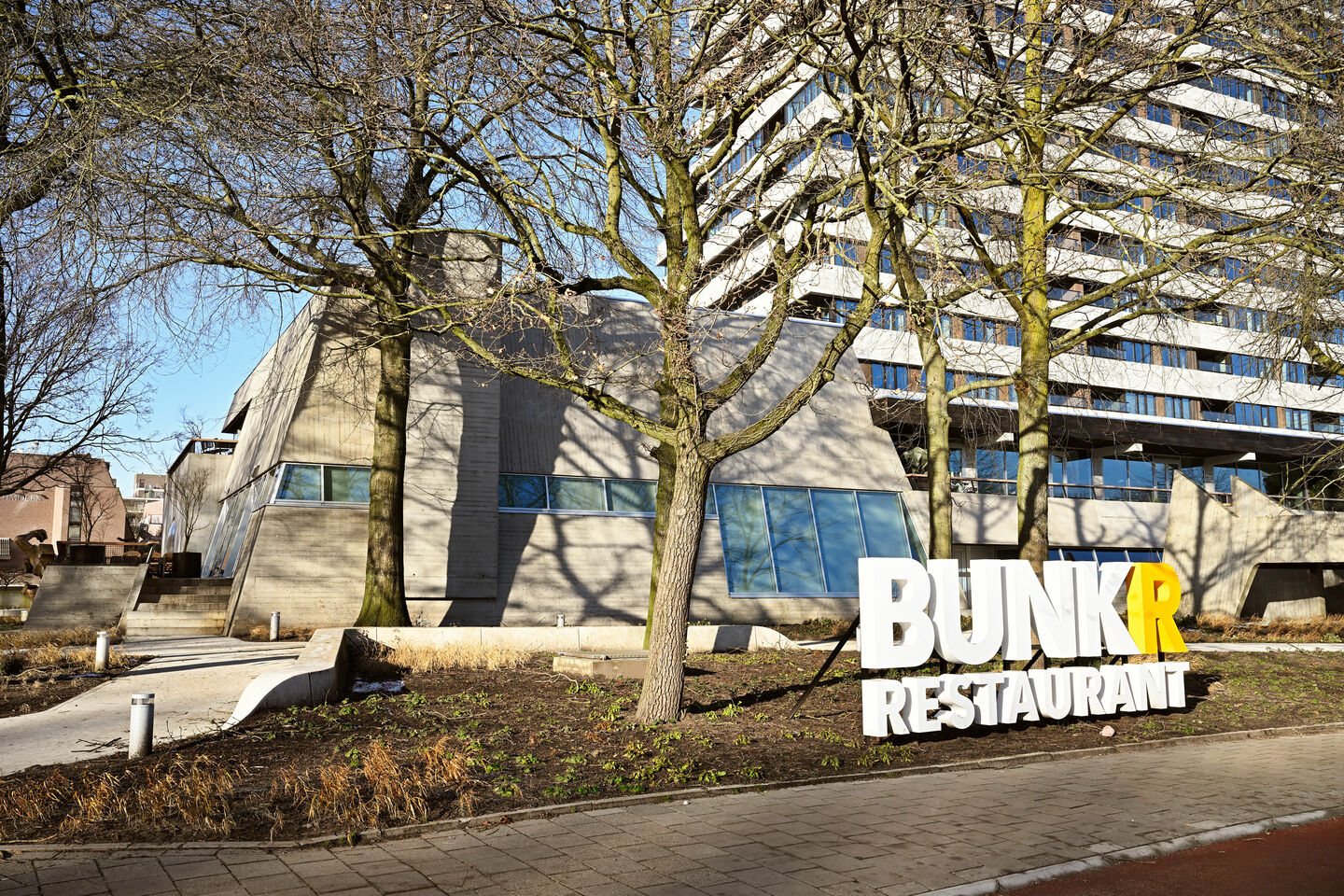
AI-powered culinary experience in the “new Bunker”
At the recently opened restaurant BUNKR, hospitality goes hand in hand with technological innovations
Last September, restaurant BUNKR opened its doors in the renovated Bunker building. In this “technological playground of the world of hospitality”, there is plenty of experimentation with technologies such as 3D food printing, talking avatars and chatbots. Cursor got to take a look inside the restaurant as well as in the kitchen.
The Bunker, traditionally considered one of Eindhoven’s eye-catchers, has been transformed almost beyond recognition over the past five years. Only the raw concrete building, which for decades housed the Eindhoven Student Corps, SSRE and Demos, still hints at this iconic building’s past as an association club. After TU/e sold the “old Bunker” in 2019, the building was almost completely renovated and given a new purpose. The lower section now houses the offices of Good Habitz – an online training center with an international market – and restaurant BUNKR. Perched on top is a 100-meter-high residential tower with 22 floors and 127 “eye-catching rental apartments” where “high-end is the norm,” as stated on the website.
Last September, restaurant BUNKR opened its doors to the public for the first time. The owners have committed to an innovative concept based on the use of technologies such as artificial intelligence (AI), but with good old-fashioned hospitality, human interaction and tasty food always put first. What does that look like in practice and what do guests think of it? Cursor visited the restaurant and spoke to co-owner Robin Vromans and TU/e alumnus Mees de Roij van Zuijdewijn, who experiments with 3D food printing in the kitchen.
“We felt it was very important for the restaurant to be in keeping with the history of the building,” says Vromans. Together with one of his companions Youri Doreleijers – who also runs city brewery 100Watt Brewery and Gastrobar Luzt, among others – they quickly came up with the idea to establish the first AI-powered restaurant in the renovated Bunker. “After that, things moved really fast,” he says. On weekdays, BUNKR provides corporate catering for Good Habitz; from Friday to Monday, it is a commercial restaurant where they experiment abundantly with new technologies. On top of that, BUNKR is also an event venue. For example, last year, they hosted TU/e’s Mystery Tour – the annual outing for TU/e administrators and student association representatives.
Chatbot Mensa
As a first experiment, BUNKR developed an app with a digital restaurant assistant that guests can chat with. It is a so-called Large Language Model – like ChatGPT, for example – trained on all sorts of data from the restaurant. “We named the chatbot Mensa, as a reference to the student “mensa” [dining hall] that used to be located in the Bunker until 2002,” Vromans explains. The idea is for guests to download the app before their visit and submit their reservations. When they check in via the app upon arrival, they are welcomed by an AI avatar projected on the screen in the entrance hall. Next, they are guided to their table as the designated one is automatically highlighted. Once seated at the table, they can use the chat environment to ask the digital assistant questions or ask for suggestions, such as which drink goes well with a certain dish or what is the best choice if they are allergic to certain ingredients.
Some guests think it's awesome that there’s something new we experiment with every month, that they can discover something new every time
But here is the anticlimax: “We’ve temporarily suspended operations because we didn’t take enough time to properly develop the app, and as a result, we ran into too many practical problems,” he says. One of them was that the app was linked to too many different systems, making it overly complex and error-prone. “We’re now looking at how we can keep things simple and improve practicality.” But the fact that some things don’t work out perfectly straight away is not a problem for the BUNKR team. “We present ourselves as a playground for testing technology in the hospitality industry. Trying out new things and continually tweaking them until everything works well is just part of the job,” says Vromans.
Because the concept is constantly evolving, guests are also surprised on a regular basis. “Some guests think it's awesome that there’s something new we experiment with every month, that they can discover something new every time,” he says. But there are also people who find it irritating or feel disappointed because they came to the restaurant with a certain expectation, he admits.
Real or AI-generated?
Fortunately, some experiments proved to be a success. For example, BUNKR’s menu was designed entirely with AI-generated photos of the dishes. “There is also a playful element to it; we are a playground, after all,” Vromans says. The restaurant asked Lyan van Furth, who was named the world’s best food photographer four years in a row, to compete against AI by recreating the photos of the dishes.
During challenges held at BUNKR during events and lectures, people get to guess which photos are real and which are AI-generated. They can also judge which version they like better. “This is how we introduce them to new technologies in a playful way. Because the majority of our guests hardly know what AI is and what you can do with it.”
Innovative and traditional
How guests like the AI-powered culinary experience at BUNKR largely depends on their expectations, according to Vromans. Some people think the food is flown to the tables by drones here and that instead of real wait staff, we just have robots driving around; so then when they see what it’s really like, they’re a little disappointed,” he says. “For others, the technological aspect isn’t all that important; they just come for good food and the unique location.”
In order to cater to both groups, BUNKR tries to combine the innovative aspect with the traditional hospitality experience. They are constantly looking at how to implement new technologies in the future, such as holograms or a bartender robot that can shake cocktails and pour beer. At the same time, they think it is important that the restaurant remains accessible to everyone. That is why they have a physical menu in addition to a digital one, and there is always room for human interaction with the wait staff.
Real or AI-generated?
Curious if you got it right? The photo on the left (see above) is AI-generated, the one on the right was taken by food photographer Lyan van Furth.
Tree of life
“At first glance, technology and hospitality don’t seem to be a good match, because technology is rigid and impersonal," says Vromans. “But we actually want to use AI and technology to make that experience very personal.” For example, the app provides guests with suggestions based on the input that are tailored to them exactly and given only to them personally. And if it is a guest’s birthday, they can use the 3D food printer to place a festive balloon on their dessert. “This way, technology doesn’t take anything away from the experience, but instead it adds value,” he believes.
And because technology takes over certain tasks, wait staff are left with more time to give personal attention to guests, he argues. “Personal attention remains extremely important and we don’t ever want to compromise on that,” he emphasizes. “But everything that doesn’t necessarily require a human being could in principle be replaced or supported by technology to help improve the guest experience. And that is what we want to test here.”
He points to a small statue in the shape of a tree (see photo below) that is always the first thing to be placed on guests’ tables. Via the built-in NFC chip, they can open the menu on their phone, but the tree also serves as a metaphor that allows the wait staff to explain the concept. “For us, the tree symbolizes the tree of life,” Vromans explains. “The roots are incredibly important, because without them, the tree would fall over and die. This means we will never let go of the roots of the traditional hospitality industry: good ingredients, tasty dishes and hospitable service. But you can experiment with everything above the ground.”
3D food printing
During his bachelor’s in Industrial Design at TU/e, Mees de Roij van Zuijdewijn discovered a new passion. He found himself spending more and more of his free time in the kitchen and enjoyed organizing dinners for friends. “But it was only during the pandemic, when I had more time, that this hobby really took off,” he says with a laugh. To combine his favorite hobby with his studies, he decided to work in a restaurant for his final project. That turned out to be a brilliant move.
His final project at the Spanish restaurant Zarzo in the heart of Eindhoven revolved entirely around 3D food printing, a process in which a special food printer “prints” edible purees in various 3D shapes. He is now experimenting with the same technique at BUNKR, where he started working as chef de partie, or specialized chef, after graduation. For three days a week, he works in the kitchen as a chef and he spends one day a week focusing entirely on experimenting with 3D food printing. “Thursday is printing day,” says the TU/e alumnus.
From puree to print
In 3D food printing, the ingredients of your choice are first processed into a puree. A piping bag is used to insert this puree into special syringes which function like a cartridge of sorts. The syringes are attached to the food printer (see first photo on the bottom left) which then “prints” different 3D shapes by spraying many thin layers of puree on top of each other. “At BUNKR, we use it as a creative tool. You have a lot of freedom to experiment with different shapes to see what works best with your dish,” says De Roij van Zuijdewijn. An added advantage is that you can use leftover products in the purees that would otherwise end up in the trash, so it’s also a way to reduce food waste.
When it comes to the variety of ingredients, the possibilities are endless. “Anything that is somewhat firm but still malleable can be printed,” he says. “We started with butter, because it has the exact right consistency (see photos above and below, Ed.). Plus, it's a great way to introduce guests to the restaurant.” All guests are given the printed butter – in the shape of the tree of life – with some bread as an appetizer.
The same goes for the shapes – you name it and the 3D printer can conjure it up. “First, you design a 3D model of your choice on the computer and then special software builds it up layer by layer to determine exactly how the shape is going to be printed. This information is then sent to the printer,” he explains.
It all sounds fairly straightforward, yet there are also some hurdles. “When you work with plastic, you know exactly how the material is going to behave,” he continues. “That’s because its properties – such as its consistency or the rate at which it cools down – are constant, allowing you to control the process.” With food, it’s much more complicated. “There are many variables that you can adjust on the 3D food printer, such as exactly how much puree it should squeeze out and at what pressure. It’s a matter of experimenting and adjusting to achieve the perfect print.”
The chef takes us into the kitchen where the printer is in the process of printing butter trees. Because the layers are ultra-thin, it takes the printer a good twenty minutes to print six pieces. To prevent guests from waiting too long for their appetizer, the shapes are printed well in advance and stored in the freezer. Shortly before serving, the butter trees are placed on plates to thaw.
Printing is just the first step, there are so many other interesting techniques you can experiment with
Follow your heart
The TU/e alumnus very much enjoys working with innovations in the kitchen. “Printing is just the first step, there are so many other interesting techniques you can experiment with.” His story is a good example of how your passion can unexpectedly guide your career path. “I didn’t necessarily feel stuck in my studies, but I knew I didn’t want to become a designer,” he says. “During my studies, we were always told that we should do things we enjoy. For me, that was cooking.” By daring to think out of the box and following his heart, he eventually managed to combine his love of cooking with his interest in technological innovations. His advice is therefore: dare to choose what you enjoy, even if you don’t yet know where that path will take you. “Don’t think too much, just do it.”

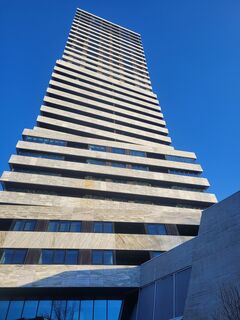
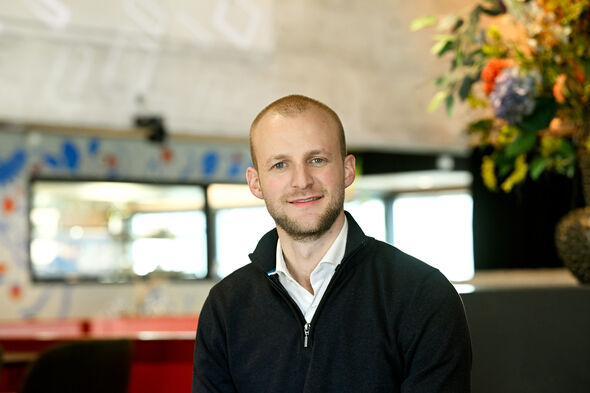
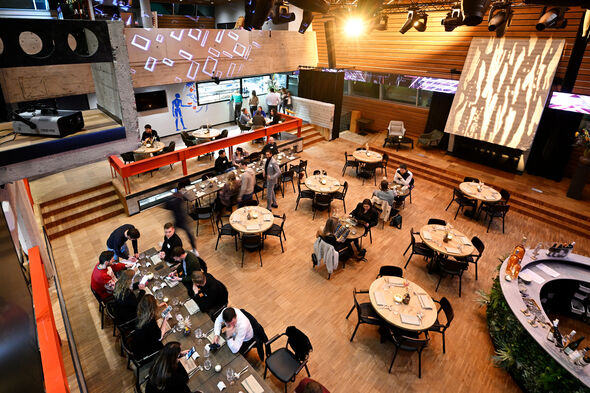
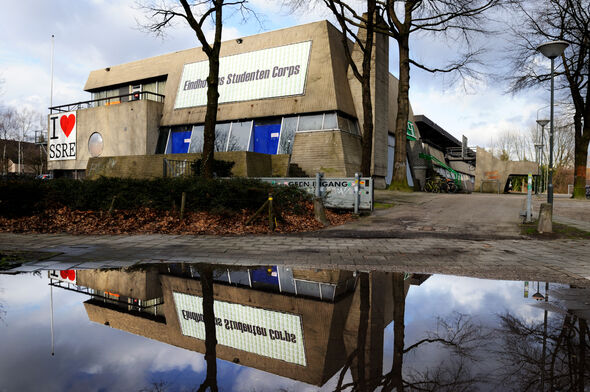
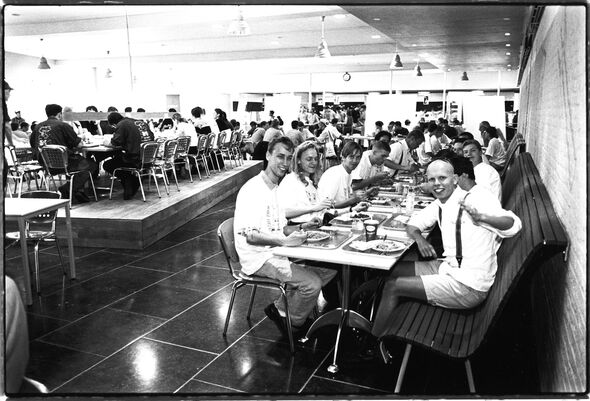
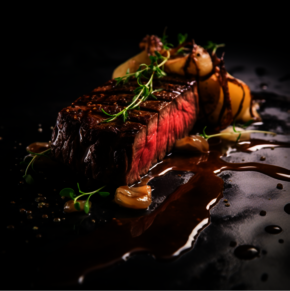
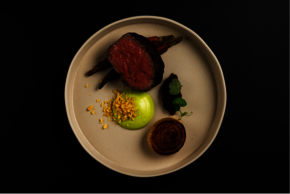
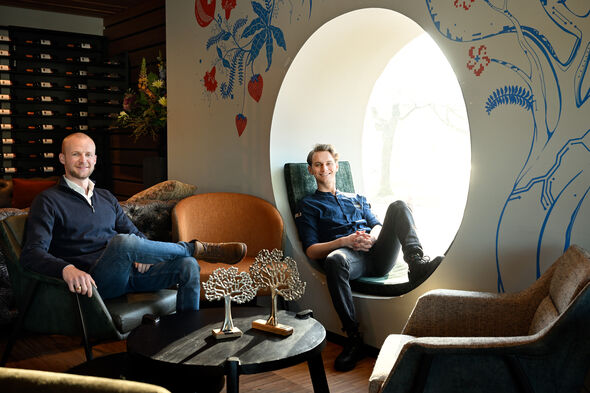
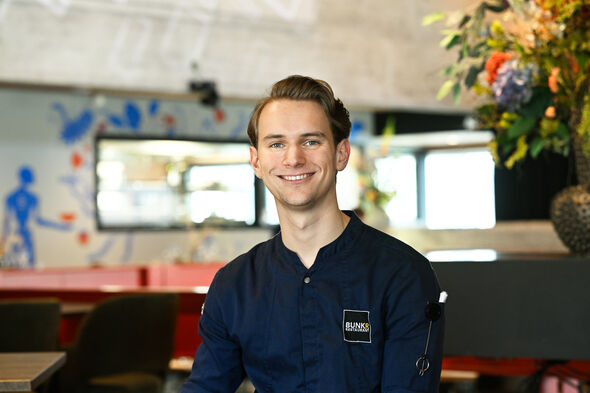
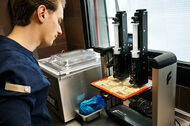
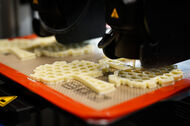
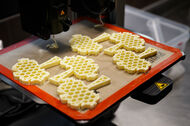
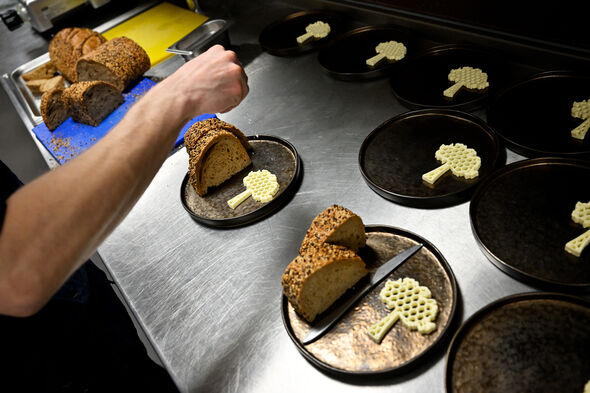
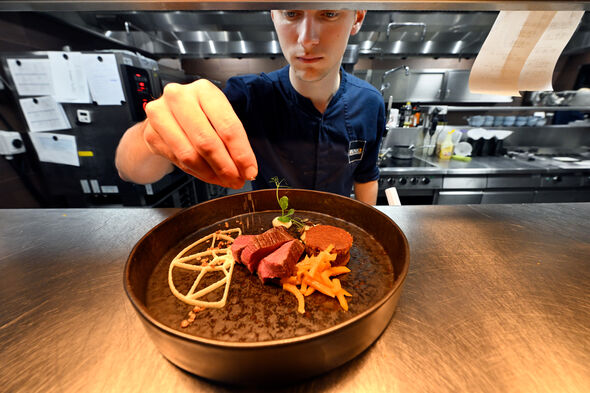
Discussion